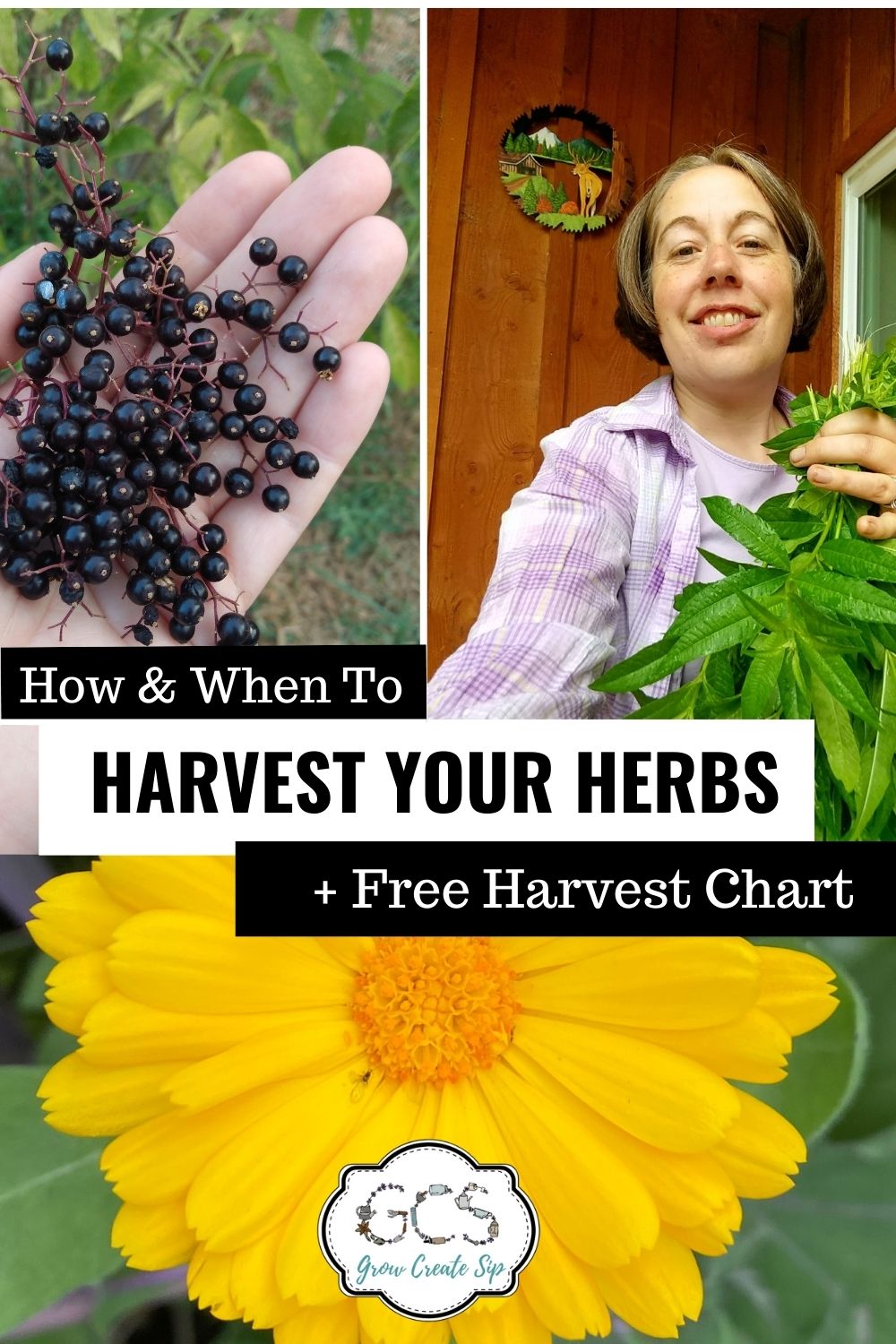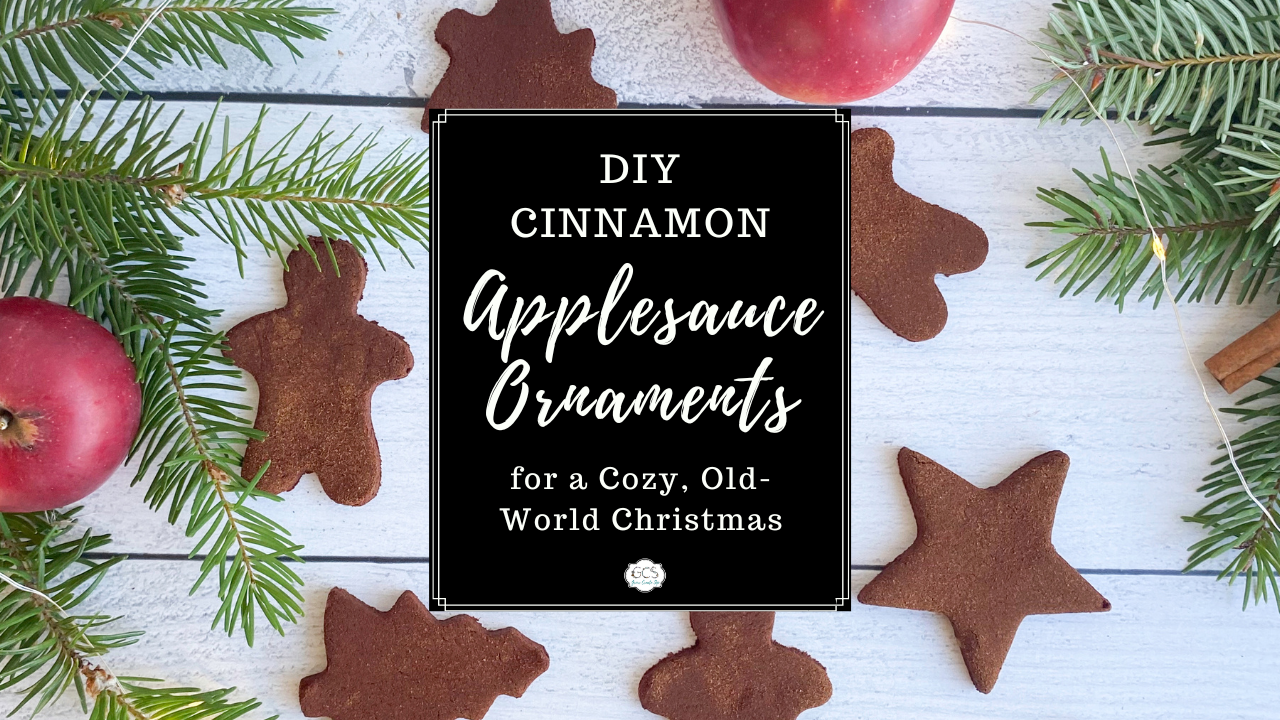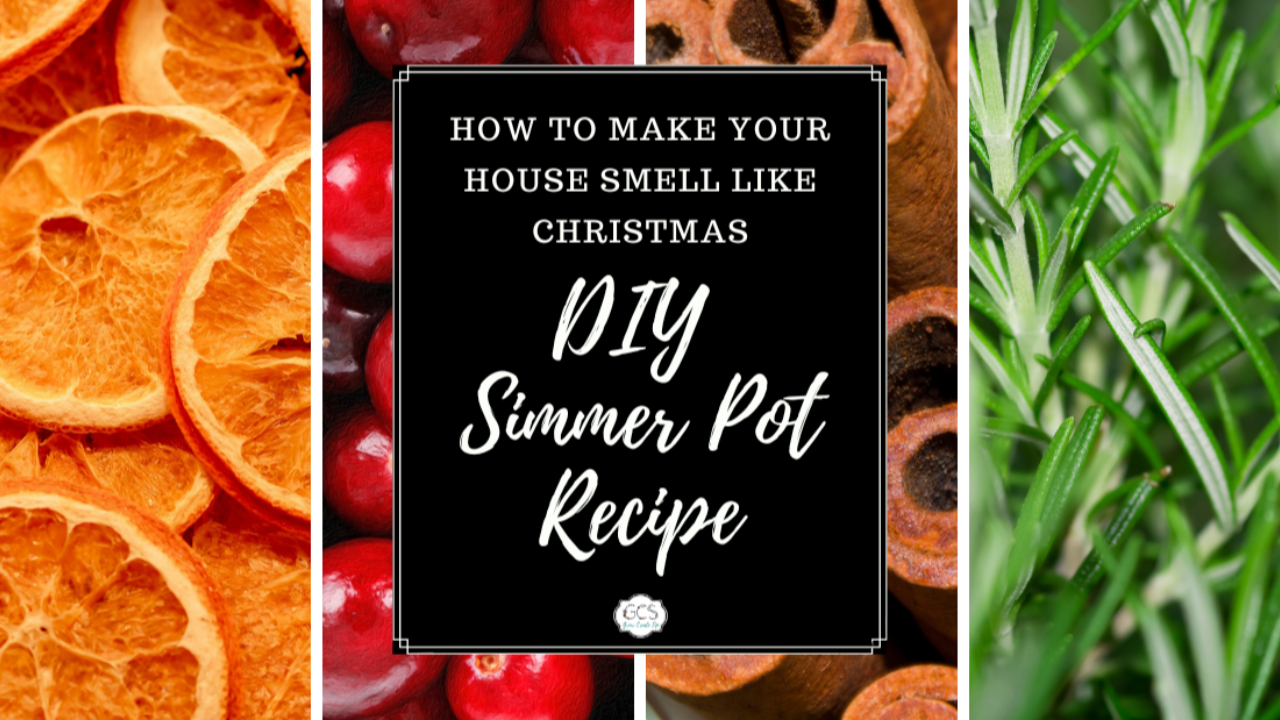How and When to Harvest Herbs: A One Stop Guide
Aug 08, 2023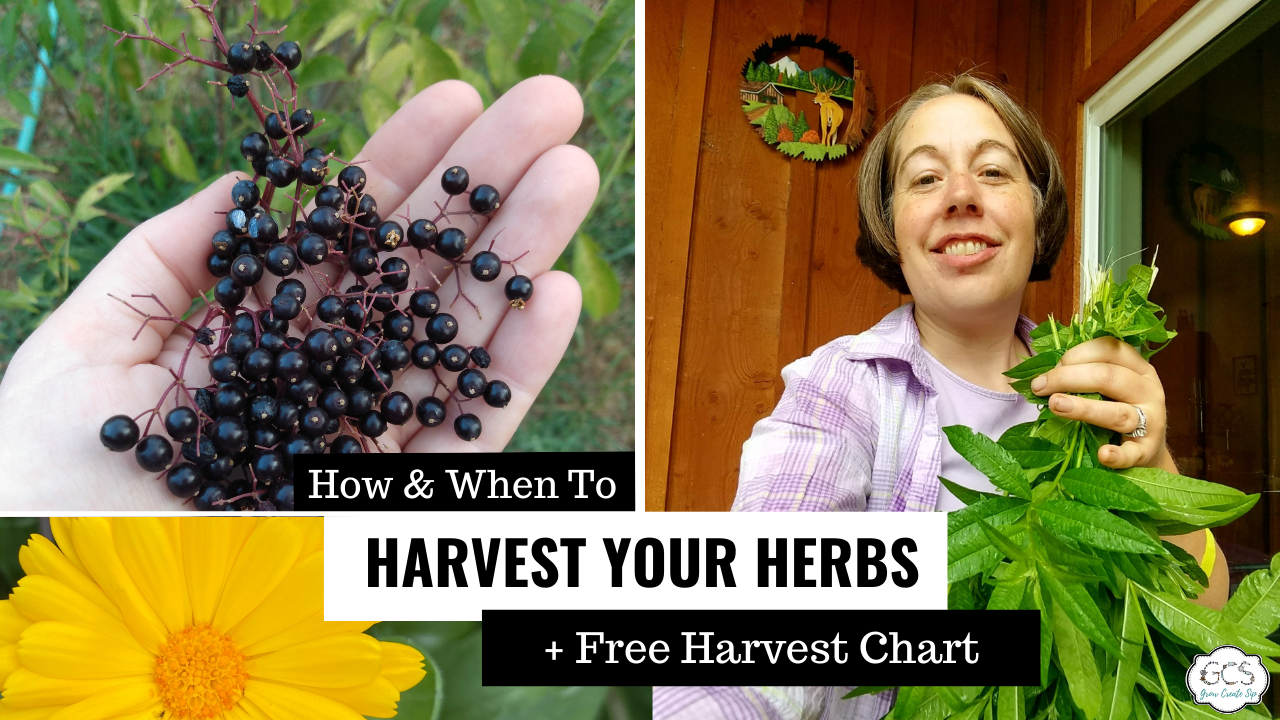
Medicinal herbs have been harvested in monasteries like St. Gall’s for thousands of years, but knowing when to pick your herbs from your garden can be confusing at times. Does harvest time depend on the herb? Does harvesting herbs depend on the weather? Or does harvesting medicinal herbs depend more on the intended preservation method? The answer is, yes! All those things factor in. Let’s dive in together so that you can better understand how to know the prime time for harvesting some of the most common garden herbs. Make sure to grab the free Herb Harvest Guide download towards the end so you have your super simple cheat sheet to keep on hand throughout the year.
Herbs that Can be Harvested Anytime
Let’s start with the simplest herbs and we will add to the list from here. What herbs can be harvested anytime? Some herbs like Calendula, can only be harvested when in flower because the flower is the medicinal part of the plant. Plants like mints however, can really be harvested any time throughout the season. Plants in the mint family, like Lemon Balm, Peppermint, Sage, Rosemary, Winter Savory, love to be cut back often when at a leaf bud and will grow back fuller and bushier. They can be harvested and cut back by ⅓ several times per season. These are my favorite kind of herbs because they are very abundant and giving.
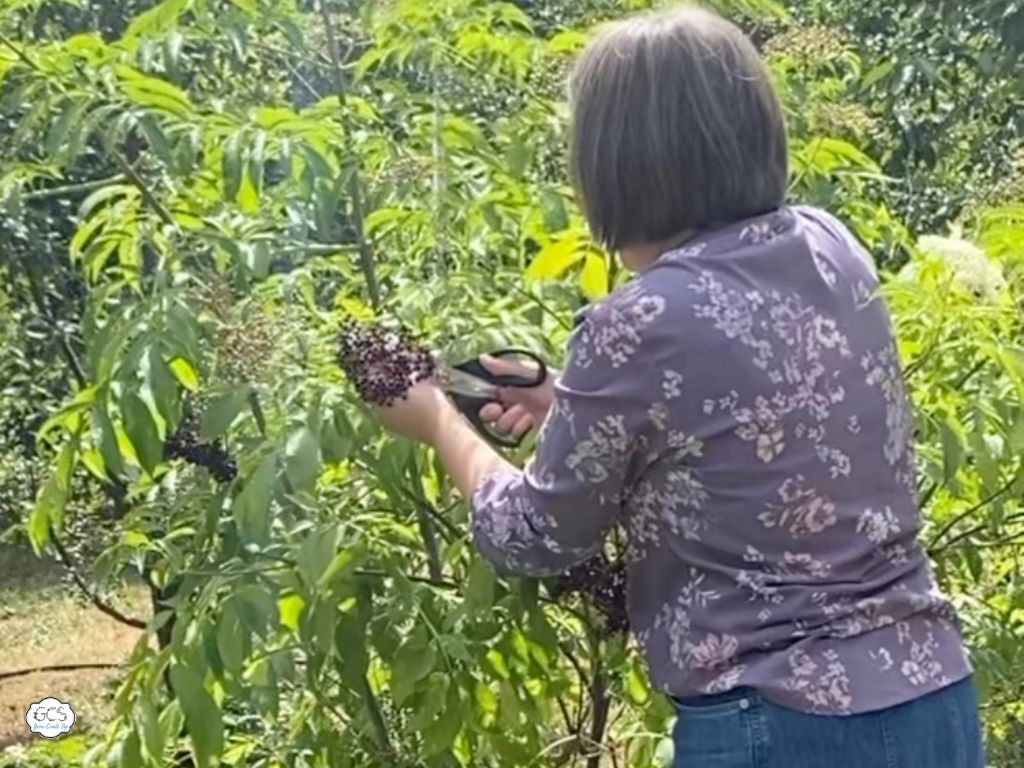
The Legal Stuff
The contents of this blog are made available via St. Fiacre's Farm LLC through Grow Create Sip and Farmhouse Teas and are for informational purposes only. This blog does not constitute medical advice; the content is not intended to be a substitute for professional medical advice, diagnosis, or treatment. Always seek the advice of a qualified healthcare provider with any questions you may have regarding a medical condition. If you think you may be suffering from any medical condition, you should seek immediate medical attention. You should never delay seeking medical advice disregard medical advice or discontinue medical treatment because of information provided by St. Fiacre's Farm, Farmhouse Teas or Grow Create Sip. Reliance on any information provided by this webinar is solely your own risk. St. Fiacre's Farm LLC (along with Farmhouse Teas and Grow Create Sip) is a participant in the Amazon Services LLC Associates Program, an affiliate program designed to provide a means for our team to earn fees for recommending our favorite products! Along with additional affiliate programs not associated with Amazon. We may earn a small commission, at no additional cost to you, should you purchase an item after clicking one of our links. Thanks for supporting us!
Harvesting Herbs before They Flower
The question is often asked: Do herbs needed to be harvested before they flower? This question largely depends on the plant that you are harvesting. There are also different schools of thought on whether it is better to harvest plants before they flower, when they are in flower, or even after flowering depending on the plant you are considering. The reality is that the medicinal components of most plants change throughout the growing season.
Earlier in the season the volatile oil content in the leaves may be higher than it is once the plant goes to flower and begins to set seed. But then the flower in many plants is the main medicinal harvest. Harvesting in the fall is also an option, especially if the root of a perennial plant is medicinal as the plant begins to direct its energy back underground in preparation for winter. So, you will find experts who argue the position from all sides - harvest before flowering, during, after flowering, in the fall, etc.
Ultimately, the decision of when to harvest specific herbs depends largely on the type of plant you are working with. Some herbs, like roses, can be harvested before they fully bloom to capture the most potent compounds. In fact, roses are often harvested when the buds are just starting to open. You can learn more about harvesting roses here. There are also some herbalists who take the approach of harvesting their plants at several different points throughout the season to take advantage of the different medicinal properties that are heightened at each point in the growing season. So, if you aren’t sure what approach to take, this is a balanced one.
My personal preference is to harvest the herbs before they flower if I'm not wanting the flower part specifically such as when harvesting a mint, spearmint or lemon balm. But if I'm wanting the flowers incase of the roses or bachelor buttons obviously I'm going to wait until they flower. I always reference my herbal monographs for the parts of the plant that hold the most medicinal values and go from there.

The Pros & Cons of Letting Herbs Go to Seed
When herbs go to seed, it signals the end of their growth cycle if the plant is an annual, or the end of their growth until the next year if the plant is a perennial. The plant's energy becomes focused on producing seeds rather than leaves, which may result in a decrease in the potency and flavor.
So if you are looking to harvest the leaf of the plant for either medicinal or culinary uses, such a basil, cilantro, sage, rosemary, etc., it may be advisable to harvest before they flower. You can also harvest after flowering, just be aware that the flavor profile may change.
For some plants however, the seed is what is often harvested. Dill and cilantro (coriander seeds) are often used for their seeds. The seeds of these plants have their own unique medicinal properties and can be harvested for medicinal and culinary purposes.
What Do You Do When Herbs Go to Seed?
Deciding what to do with your plant when they can go to seed can be a very personal decision based on the needs of your family and your garden, as well as what your goals are for your home medicinal cabinet.
For instance if you want to delay the plant from going to seed, especially mint family plants, it is important to regularly check for new flower stalks and pinch off one stalk. This redirects the plant's flowering energy to a different stalk that has not yet produced a flower shoot. For flowers of plants like Calendula or Rose, it is recommended to pinch off the flowers either just before they fully open or once they have fully opened to enjoy their medicinal benefits and keep them from going to seed.
To save seeds from your medicinal herb plants just follow these simple steps:
- Allow the plant to fully mature and wait until the flower heads or seed pods have fully dried out and turned brown.
- Snip the dried seed heads from the plant and store them in a labeled container in a cool, dry place.
- Take caution when snipping off the seed heads, as they can easily fall and scatter when the stem is cut. Consider cutting the stems over a plastic baggie or brown paper sack to minimize seed loss.

Getting More from Your Herbs with Continuous Harvesting
You can prolong your harvest of many of your herbs with some of these simple tips that encourages them to keep growing:
- Harvest from the top: When harvesting herbs, always start from the top of the plant and work your way down. This allows the lower leaves to continue receiving sunlight and promotes new growth.
- Use clean hands and tools: Make sure to use clean, sharp scissors or pruning shears when harvesting herbs. This helps minimize damage to the plant and reduces the risk of introducing diseases. Alternatively, for delicate plants you can use clean hands pinching the plant above a lower leaf bud to encourage new growth from that spot.
- Harvest selectively: Instead of harvesting all the leaves from a single plant, selectively pick a few leaves from each plant. This allows the plant to continue producing new leaves and ensures a steady supply of fresh herbs.
- Avoid over-harvesting: It's important not to harvest more than one-third of the plant at a time. Removing too many leaves can stunt the growth of the herb and weaken the plant over time.
- Harvest in the morning: Harvesting herbs in the morning, when the volatile oils are at their peak. Be sure to harvest after the dew has dried for easier drying and preservation.
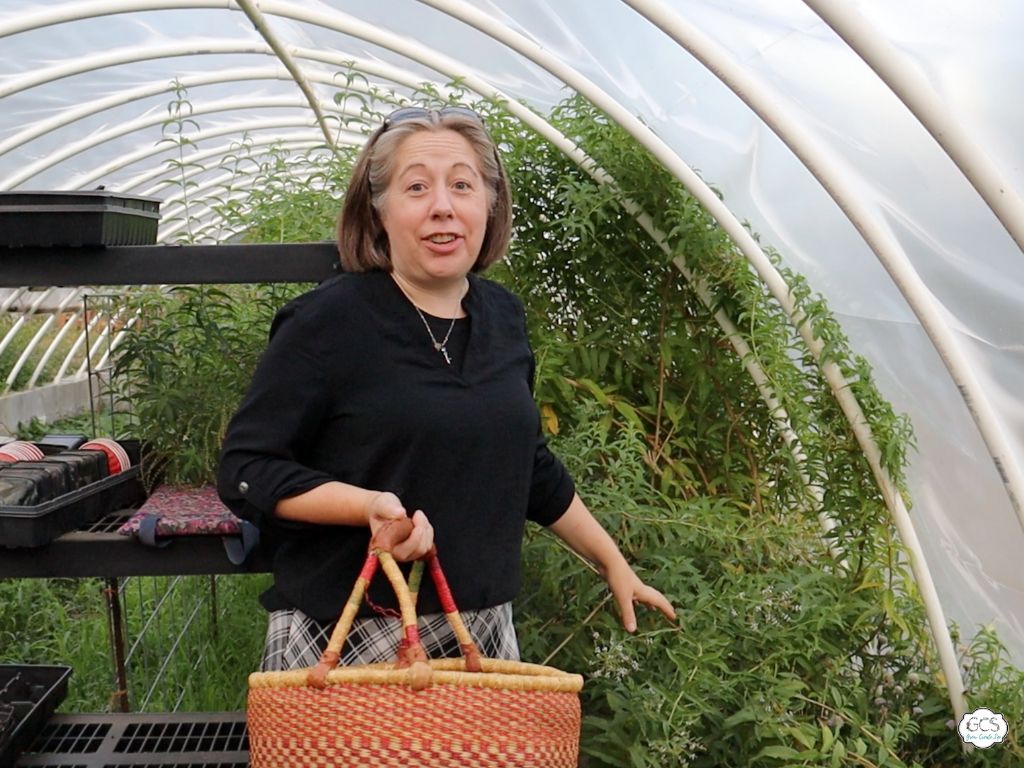
End of Season Herb Plant Care
So what do you do with your medicinal plants at the end of the season? At the end of the growing season, it's important to properly care for your herb plants to ensure their survival and productivity in the following year. Here are some steps you can take:
- Collect seeds: If your herb plants have produced seeds, you can collect them for future planting. Allow the seeds to fully mature and dry on the plant before harvesting.
- Cut back the plants: Once the growing season is over, you can cut back the herb plants to prepare them for winter. Remove any dead or damaged foliage and trim the plants to a manageable size.
- Mulch the plants: Applying a layer of mulch around the base of the plants can help protect the roots and conserve moisture during the winter months.
- Consider overwintering indoors: Some herb plants, like rosemary, may not survive the winter outdoors in colder climates. In such cases, you can consider bringing the plants indoors and providing them with adequate light and moisture. For plants that are not hardy to your growing zone, you may want to consider growing these in pots rather than in the ground so that they are easier to bring inside for the winter months.
Winter Medicinal Herb Care
Cutting back herb plants for winter is a common practice. However, the extent to which you should cut back your herbs depends on the specific plant. For example, perennial herbs should have the dead winter stems cut back to the ground in the spring. Woody herbs like rosemary and lavender should be pruned lightly. Avoid cutting back into the woody portions. Prune no more than one-third of the plant in the fall or early spring.
It's important to note that not all herbs require heavy pruning for winter. Some herbs, like thyme and winter savory, benefit from light cutting to maintain their shape, however this may not even be necessary if you have harvested them often throughout the season. Other plants like sage don’t need any pruning at all until the spring. In fact, they will often survive through the winter and you can continue to harvest them even under a blanket of snow.
While harvesting medicinal herbs from your home garden can feel confusing, it is also a simple process once you get to know your plants. Whether you choose to harvest herbs before they flower or after, consider the specific herb being harvested and your intended uses for that plant. When the growing season comes to an end, prune if needed in the fall to prepare the plant for good growth in the spring.
Remember to consult local garden nurseries, other experienced growers near you, and your local cooperative extension for more gardening resources. For more information on growing and harvesting specific herbs, you can consult the following links:

Harvesting Herbs by Season
Below is a harvesting schedule for some common culinary and medicinal herbs organized by season. The harvest seasons are based on the general USDA growing zones. This list is not set in stone as there will be some variation by region based on when certain plants are ready. Keep in mind that the harvesting schedules below are general guidelines. Actual harvest times may vary depending on your specific growing zones or microclimates.
Do you have trouble remembering things like I do? Sometimes it's just easier to have a printed sheet with all the essential details. Make sure to download your free Herb Harvesting Guide here so that you never miss a plant before it goes to seed!
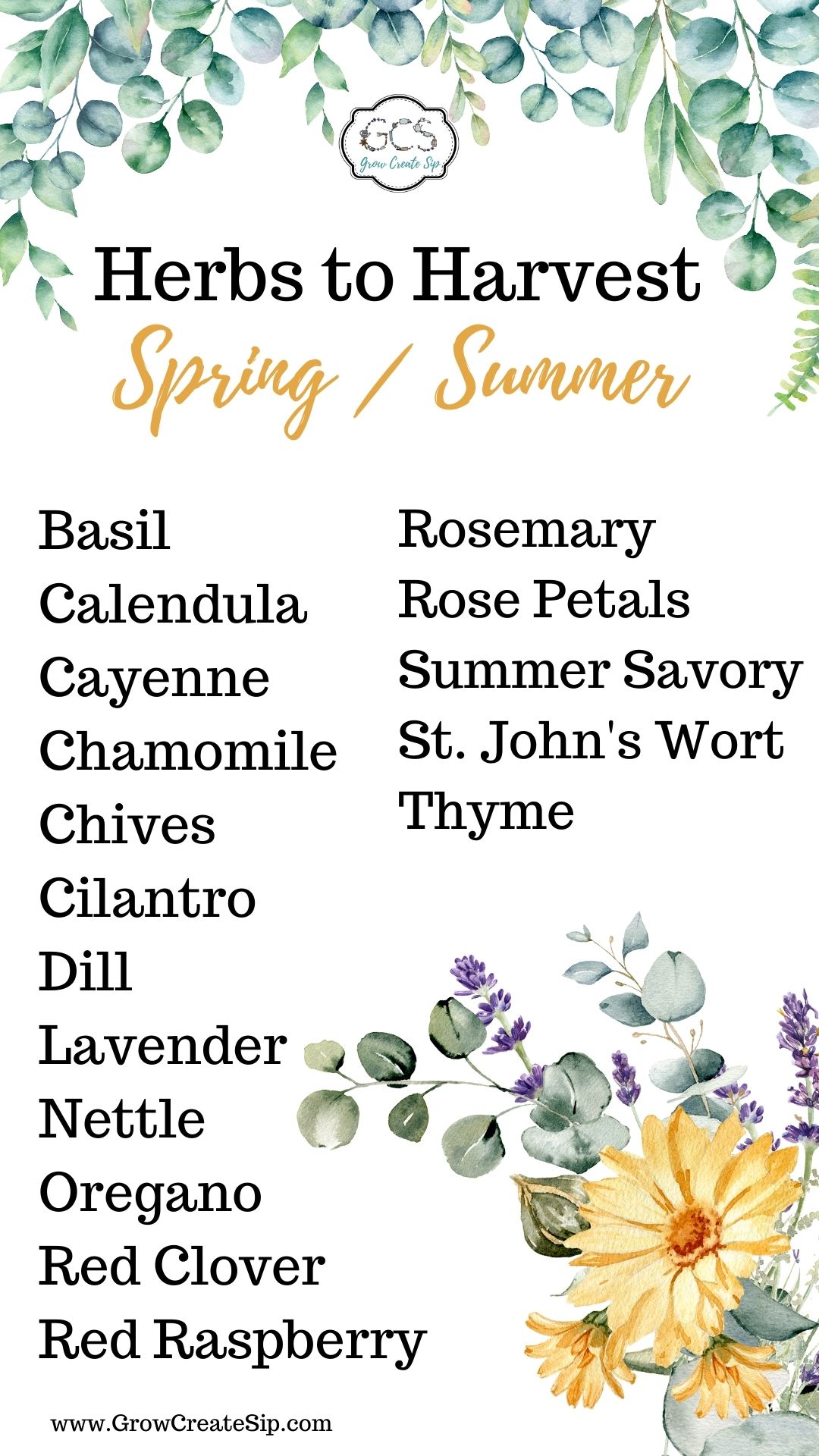
Spring / Summer Herb Harvesting Guide
- Basil (Ocimum basilicum)
- Part harvested: leaves
- Annual
- Harvest: Throughout summer before it goes to seed.
- Calendula (Calendula officinalis)
- Part harvested: flowers
- Annual
- Harvest: Late spring to early summer
- Cayenne (Capsicum annuum)
- Part harvested: fruit (peppers)
- Annual
- Harvest: Late summer to early fall
- Chamomile (Matricaria chamomilla)
- Part harvested: flowers
- Perennial, Hardy in USDA Zones 2-9
- Harvest: Late spring to early summer
- Chives (Allium schoenoprasum)
- Parts harvested: leaves, flowers
- Perennial, Hardy in USDA Zones: 3-10
- Harvest: Throughout the growing season before flowers set seed.
- Cilantro (Coriandrum sativum)
- Parts harvested: leaves, seeds
- Annual
- Harvest: leaves before it goes to flower. Bolts quickly. Successive plantings allows for a longer harvest period.
- Dill (Anethum graveolens)
- Part harvested: leaves and seeds
- Perennial, Hardy in USDA Zones: 2-11
- Harvest: Early to mid-spring for leaves, later summer to fall for seeds.
- Lavender (Lavandula species)
- Parts harvested: flowers
- Perennial, Hardy in USDA Zones: 5-10
- Harvest: bloom time varies by variety
- Nettle (Urtica dioica)
- Part harvested: leaves
- Perennial, Hardy in USDA Zones: 3-10
- Harvest: Early to mid-spring
- Oregano (Origanum species)
- Parts harvested: leaves
- Perennial, Hardy in USDA Zones 4-10
- Harvest: Late Spring / Early Summer
- Red Clover (Trifolium pratense)
- Part harvested: flowers
- Perennial, Hardy in USDA Zones: 4-9
- Harvest: Mid to late summer
- Red Raspberry (Rubus idaeus)
- Parts harvested: leaves and fruit
- Perennial, Hardy in USDA Zones: 3-9
- Harvest: Mid to late summer
- Rosemary (Rosmarinus species)
- Parts harvested: leaves
- Perennial, Hardy in USDA Zones: 7-10
- Harvest: Spring/Summer
- Rose Petals (Rosa spp.)
- Part harvested: petals
- Perennial, Hardy in USDA Zones: Varies by species
- Harvest: Throughout spring and summer when in bloom
- Summer Savory (Satureja hortensis)
- Parts harvested: leaves
- Perennial, Hardy in USDA Zones 1-11
- Harvest: Summer
- St. John's Wort (Hypericum perforatum)
- Part harvested: flowers and leaves
- Perennial, Hardy in USDA Zones: 5-9
- Harvest: when in bloom, mid-summer
-
Thyme (Thymus vulgaris)
-
Part harvested: leaves
-
Perennial, Hardy in USDA Zones: 5-9
-
Harvest: Summer
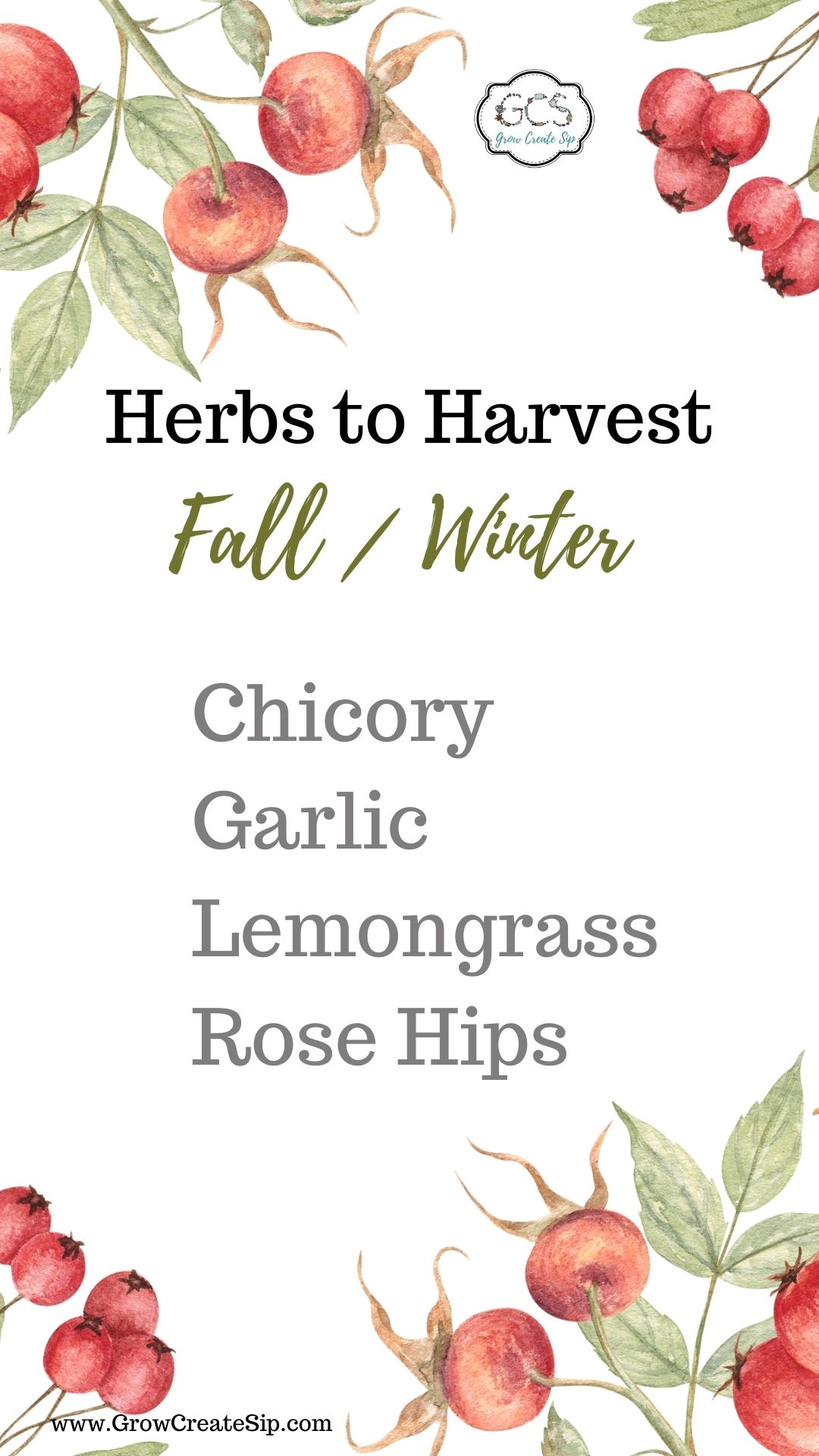
Fall/Winter Herb Harvesting Guide
Harvest all of your fall and winter herbs at just the right time with this fall/winter easy herb harvesting list!
- Chicory (Cichorium intybus)
- Parts harvested: Primarily the root, aerial parts also
- Perennial, Hardy in USDA Zones 3-8
- Harvest: Root in fall when ground is soft from rain. Aerial parts when plant is in bloom.
- Garlic (Allium sativum)
- Part harvested: bulbs
- Annual
- Harvest: fall
-
Lemongrass (Cymbopogon flexuosus, C. citratus)
- Parts harvested: leaves
-
Annual except in USDA Zones 9-10
-
Harvest: Fall
- Rose Hips (Rosa spp.)
- Part harvested: fruit (hips)
- Perennial, Hardiness varies rose by species
- Harvest: fall/winter

Herbs with Extended Harvests
Some herbs have multiple harvest seasons and/or a very long or even years long harvest season. Get the best times to harvest those herbs here with the extended harvest list!
-
California Poppy (Eschscholzia californica)
- Parts harvested: whole plant
- Perennial, Hardy in USDA Zones 6-10
- Harvest: February - September
- Dill (Anethum graveolens)
- Parts harvested: leaves, seeds
- Perennial, Hardy in USDA Zones 2-11
- Harvest: Summer for leaves, fall for seeds
- Lemon Balm (Melissa officinalis)
- Part harvested: leaves
- Perennial, Hardy in USDA Zones: 3-9
- Harvest: Spring / Fall
- Mint (Mentha spp.)
- Part harvested: leaves
- Perennial, Hardy in USDA Zones: 3-11
- Harvest: Late Spring / Early Fall
- Peppermint (Mentha x piperita)
- Part harvested: leaves
- Perennial, Hardy in USDA Zones: 3-10
- Harvest: Late Spring / Early Fall
- Sage (Salvia officinalis)
- Part harvested: leaves
- Perennial, Hardy in USDA Zones: 4-10
- Harvest: Usually Spring/Summer but also winter
- Tarragon (Artemisia dracunculus)
- Parts harvested: leaves
- Perennial, Hardy in USDA Zones 4-9
- Harvest: Late Spring to Early Fall
-
Winter Savory (Satureja montana)
-
Part harvested: leaves
-
Perennial, Hardy in USDA Zones: 6-9
-
Harvest: Year Around
How to use Your Herbs Once They Are Harvested
For ideas on how to turn your herbs into delicious, custom made teas make sure to check out our Free Tea Blending Workshop and to dive even deeper into how to use your herbs once they are harvested we have a collection of over 70 indepth herbal monographs (3 pages each) in our Herbal Studio & Communi-tea. A fabulous library of resources you won’t want to miss out on! You also have access to a collection of community discussions of other like-minded herbalists.
Before you dive deep into your herb abundance I”d love to know, what is the most difficult herb you have tried to grow? Will you let me know in the comments below? Maybe another reader here will have some helpful tips for you, or maybe you will be able to help someone else in the comments below.
More Herb Harvest & Storage Tips
- Best Food Dehydrator for Drying Herbs
- How to Make Herb-Infused Oils with Medicinal Herbs
- Calendula Salve and Infusing with Botanical Oils
- How to Preserve Flowers for Tea
- Best Way to Store Herbs After Harvest
- How to Dehydrate Herbs without a Dehydrator
